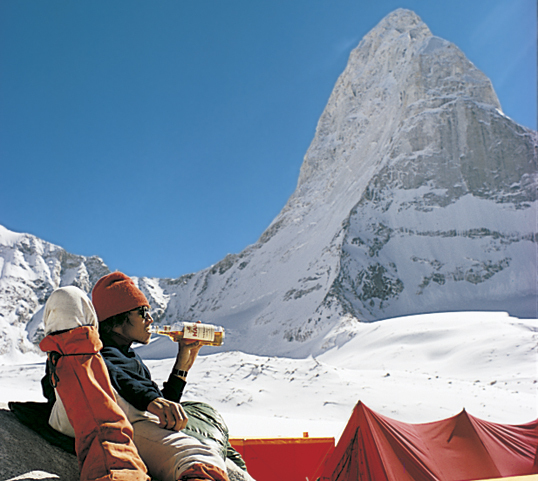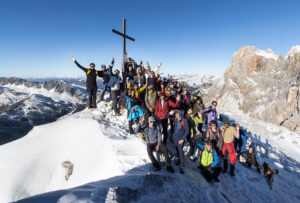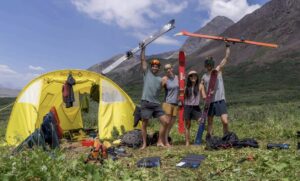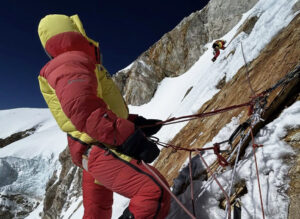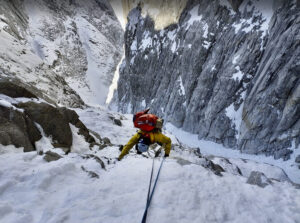Luca Schiera, Luca Moroni, and Giacomo Mauri of Italy are on their way to repeat the famed Boardman-Tasker route on the West Wall of Changabang. Why is this repeat of a route on a 6,864m peak in India’s Garwhal Himalaya so significant? Because it would be the first alpine-style climb of a line so difficult that its first ascent made mountaineering history. The line has been repeated only once, after 46 years and over 20 attempts.
The West Wall of Changabang, aesthetic, remote, and vertical, has a near-mythical reputation among alpinists. In 1974, this 1,600m Himalayan cliff defeated an all-star team led by Chris Bonington. Two years later, in 1976, Pete Boardman and Joe Tasker finally climbed it after a 25-day epic.
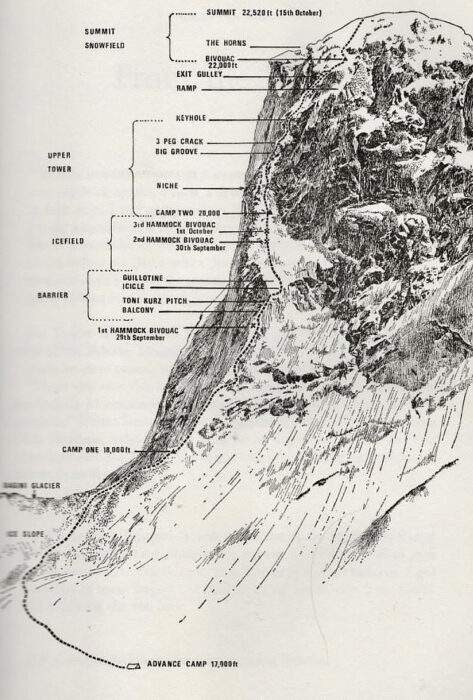
Boardman and Tasker’s 1976 route up the West Wall of Changabang. Topo by Pete Boardman
“The route traced by the two English champions marked a turning point in how Himalayan expeditions were conceived,” the Italians said before boarding a plane for India today. “It was a masterpiece of new, technical, and lightweight mountaineering, aimed at an objective of extreme technical difficulty at high altitude.”
Schiera, Moroni, and Mauri belong to the prestigious Le Ragni di Lecco mountain club. The Lecco Spiders, as they’re known, have been around for over 70 years. Even today, they feature prestigious members such as Matteo Della Bordella.
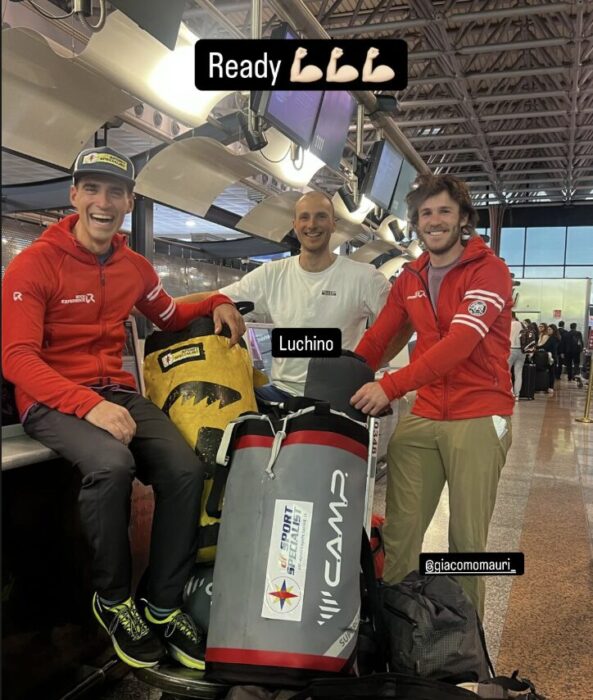
The climbers at the airport. Photo: Instagram/Ragni di Lecco
Unrepeated for 26 years
In the 48 years since Boardman and Tasker’s feat, some 20 teams attempted the route and failed until 2022. That year, Matthew Scholes and Kim Ladiges of Australia and Daniel Joll of New Zealand repeated the route in a nine-day push. All three belonged to the New Zealand Alpine Team. ExplorersWeb considered their expedition one of the best of the year.

The Kiwi 2022 expedition used big-wall techniques. Here, a climber hauls the big gear bags. Photo: New Zealand Alpine Team
At the time, they presented the climb as alpine style (and so we inaccurately reported it). In fact, they did their single, bottom-to-top push in a light and elegant way, but also acclimatized directly on the route. They climbed some sections using big-wall techniques, such as shuttling gear up and down and retreating at night to their portaledges lower down.
This year, the three Italians want to apply strict alpine-style criteria, neither retreating nor repeating a single pitch. By these standards, they must climb on-sight from bottom to top in one attempt.
Ultimate test
“Even if it is a repetition of a route already opened by others, the unknown and the challenge are the same,” Schiera explained on the Ragni di Lecco’s website. “We ask ourselves if it is possible, but above all, if we are capable of climbing Changabang with the same approach that we use on the walls of the Alps or Patagonia, where the lower altitudes can allow you to move with a very light approach.”
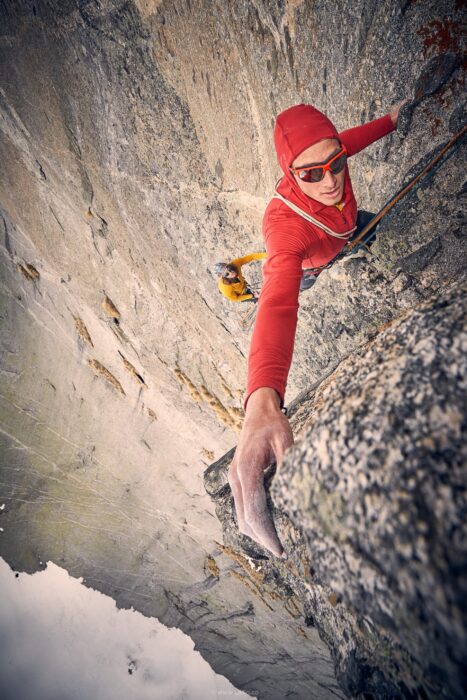
Luca Schiera. Photo: Ragni di Lecco
Schiera is fascinated by the evolution of mountaineering and points out how Bonington’s 1974 expedition considered the West Ridge of Changabang “impossible.”
“Then Boardman and Tasker proved the opposite, climbing what was at the time the most difficult and innovative route in the Himalaya,” the Italian added.
Luca Moroni explained they contacted the New Zealand team for beta, which they kindly provided: “Daniel Joll compared the technical difficulty to that of the Walker Spur on the Grandes Jorasses, but with 2,500m more altitude, which will significantly increase the effort,” Moroni said. “After talking to him, we still thought it was possible to attempt an alpine-style climb.”
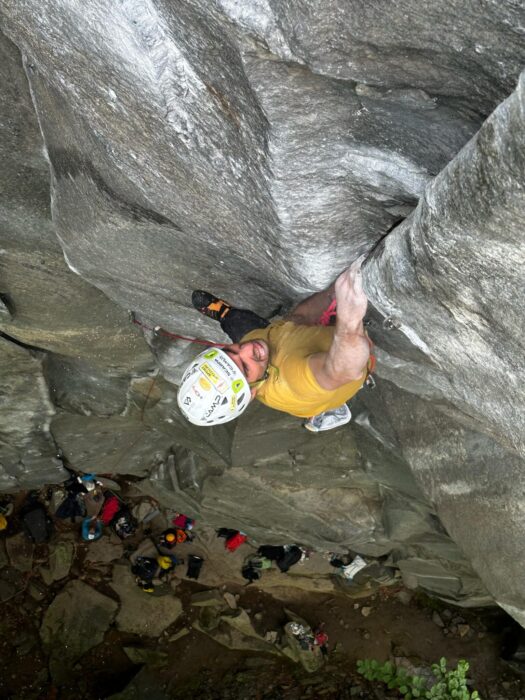
Luca Moroni. Photo: Ragni di Lecco
The new team trained hard and has already fully acclimatized.
“We will need to have the conditions on the wall and the weather on our side,” said Moroni. “Unfortunately, that area is always unstable, allowing very short windows of good weather…All the more reason to climb fast and light.”
Giacomo Mauri, the youngest member in the team, recalls the photo (lead image) of Dougal Haston sipping whiskey with the wall in the background. Mauri signed on the moment he was invited, unwilling to pass up such an iconic adventure.
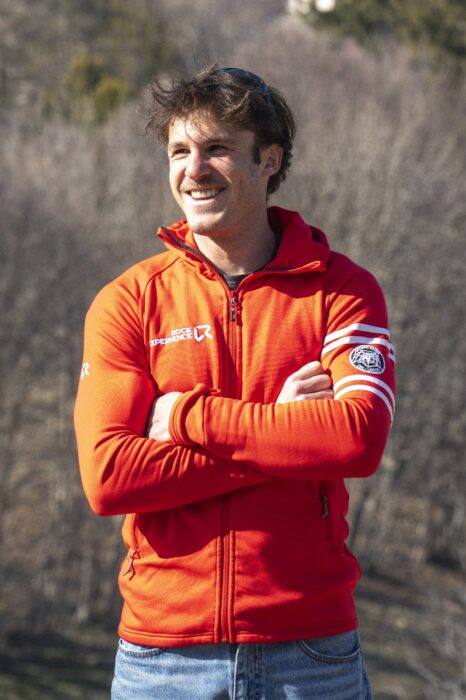
Giacomo Mauri. Photo: Ragni di Lecco
